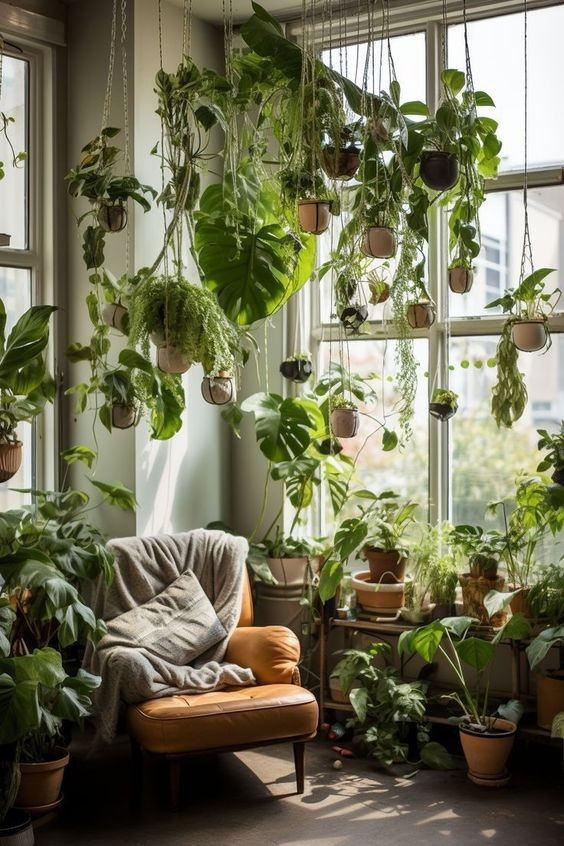Stunning Plant House: A Gorgeous Greenery Haven
Creating a stunning plant house can transform your living space into a tranquil, vibrant haven filled with lush greenery and natural beauty. Whether you’re a seasoned plant enthusiast or a beginner looking to add some greenery to your home, these ideas and tips will help you design a gorgeous plant house that will be the envy of all who visit.
1. Planning Your Plant House
Before diving into the design, it's essential to plan your plant house. Consider the following:
Space Assessment: Determine where you want to place your plants. It could be a dedicated room, a section of your living room, or even a balcony.
Light Conditions: Assess the natural light in your space. Different plants require varying light conditions, so choose plants that thrive in the available light.
Climate Control: Ensure your plant house has a consistent temperature and humidity level suitable for your chosen plants.
2. Choosing the Right Plants
Selecting the right plants is crucial for creating a thriving plant house. Here are some popular options:
Low-Light Plants: Snake plants, pothos, and ZZ plants are perfect for areas with limited sunlight.
Bright Light Plants: Succulents, cacti, and fiddle leaf figs thrive in bright, indirect light.
Humidity-Loving Plants: Ferns, orchids, and air plants flourish in humid environments, making them ideal for bathrooms or kitchens.
3. Creative Plant Displays
How you display your plants can make a significant impact on the overall aesthetic of your plant house. Consider these creative ideas:
Hanging Gardens: Use macrame hangers or wall-mounted planters to create a hanging garden. This not only saves space but also adds a dynamic element to your decor.
Vertical Gardens: Install vertical planters or use shelves to create a green wall. This is a great way to maximize space and make a bold statement.
Terrariums: Create miniature ecosystems with glass terrariums. They are perfect for small plants and add a whimsical touch to your plant house.
Plant Stands: Elevate your plants with stylish plant stands. Choose stands of varying heights to create a layered look.
4. Incorporating Greenery into Your Decor
Integrate plants seamlessly into your home decor for a cohesive and stylish look:
Bookshelf Gardens: Add small potted plants to your bookshelves for a touch of greenery among your books and decor items.
Window Sills: Utilize window sills for plants that love sunlight. Decorative pots can enhance the aesthetic appeal.
Tabletop Displays: Create a centerpiece with a collection of small plants on your dining or coffee table.
Plant Corners: Dedicate a corner of your room to a cluster of plants. Use a mix of tall and short plants to create depth and interest.
5. Caring for Your Plant House
Proper care is essential to maintain a thriving plant house. Here are some general care tips:
Watering: Understand the watering needs of each plant. Overwatering is a common mistake, so let the soil dry out between waterings for most plants.
Fertilizing: Use appropriate fertilizers to provide essential nutrients. Follow the recommended schedule for each plant type.
Pruning: Regularly prune your plants to remove dead leaves and encourage new growth.
Pest Control: Keep an eye out for pests and treat them promptly to prevent infestations.
6. Seasonal Changes
Adapt your plant care routine to the changing seasons:
Winter: Reduce watering and ensure plants are kept away from drafts. Consider using a humidifier to maintain humidity levels.
Spring: Increase watering and fertilizing as plants enter their growing season. Repot any plants that have outgrown their containers.
Summer: Ensure plants are protected from intense sunlight and increase watering frequency.
Fall: Gradually reduce watering and prepare plants for the dormant season.
7. Personalizing Your Plant House
Make your plant house uniquely yours by adding personal touches:
Decorative Pots: Choose pots that reflect your style. From rustic terracotta to modern ceramic, the options are endless.
Plant Labels: Use creative labels to identify your plants. This is especially useful if you have a large collection.
Accessories: Incorporate accessories like plant misters, watering cans, and decorative rocks to enhance the aesthetic.






